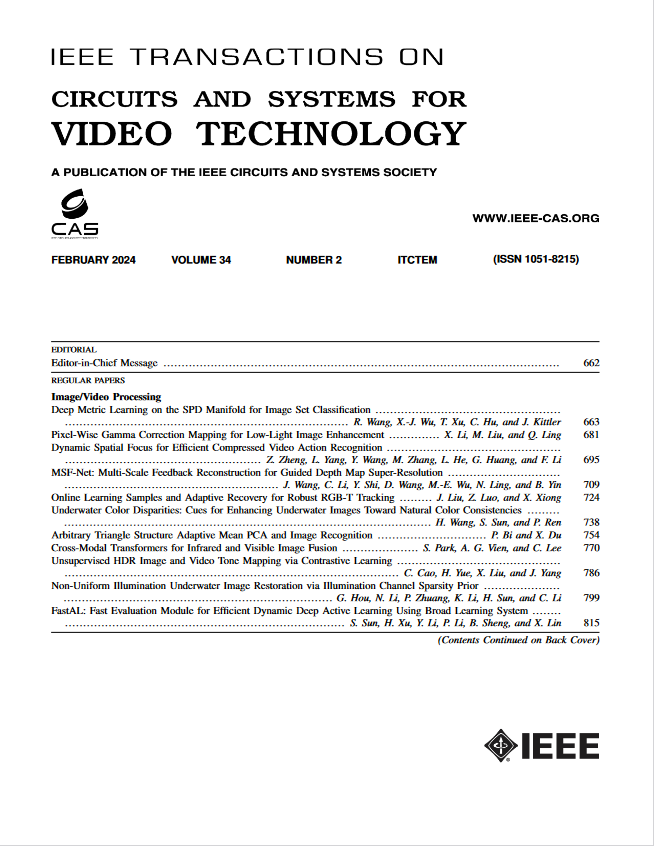A Masked Reference Token Supervision-Based Iterative Visual-Language Framework for Robust Visual Grounding
IF 8.3
1区 工程技术
Q1 ENGINEERING, ELECTRICAL & ELECTRONIC
IEEE Transactions on Circuits and Systems for Video Technology
Pub Date : 2024-08-30
DOI:10.1109/TCSVT.2024.3452418
引用次数: 0
Abstract
Visual Grounding (VG) has become a prominent task in recent years, achieving significant advancements with the development of detection and vision transformers. However, existing VG methods struggle to handle the effects of inaccurate or irrelevant textual descriptions, tending to generate false-alarm objects. Moreover, existing methods fail to capture fine-grained features, accurate localization, and comprehensive context understanding from the whole image and textual descriptions. To address these issues, we propose an Iterative Robust Visual Grounding (IR-VG) framework with Multi-stage False-alarm Sensitive Decoder (MFSD) to prevent the generation of false-alarm objects when presented with inaccurate expressions. The framework introduces Masked Reference based Centerpoint Supervision (MRCS) and Iterative Multi-level Vision-language Fusion (IMVF) for enhancing the accuracy of localization and better visual-language alignment. To investigate the elements that affect VG robustness further, we release a robust VG benchmark with 24,000 instances and we also provide a detailed classification of false-alarm according to different parts of speech. Extensive experiments on existing state-of-the-art (SOTA) VG methods and foundation models have proven that it is difficult to handle the robustness of VG by existing models. Even foundation models, which have been pre-trained with a large amount of data, have difficulty to understand inaccurate language descriptions. Our IR-VG can handle false-alarm issues in robust VG well and achieve new SOTA results on the newly proposed robust VG datasets. Ablation studies and visualization experiments demonstrate the effectiveness of the proposed components. Moreover, the proposed framework is also verified effective on five regular VG datasets. Codes and models will be publicly at基于掩码参考标记监督的迭代视觉语言框架,实现稳健的视觉接地
本文章由计算机程序翻译,如有差异,请以英文原文为准。
求助全文
约1分钟内获得全文
求助全文
来源期刊
CiteScore
13.80
自引率
27.40%
发文量
660
审稿时长
5 months
期刊介绍:
The IEEE Transactions on Circuits and Systems for Video Technology (TCSVT) is dedicated to covering all aspects of video technologies from a circuits and systems perspective. We encourage submissions of general, theoretical, and application-oriented papers related to image and video acquisition, representation, presentation, and display. Additionally, we welcome contributions in areas such as processing, filtering, and transforms; analysis and synthesis; learning and understanding; compression, transmission, communication, and networking; as well as storage, retrieval, indexing, and search. Furthermore, papers focusing on hardware and software design and implementation are highly valued. Join us in advancing the field of video technology through innovative research and insights.

 求助内容:
求助内容: 应助结果提醒方式:
应助结果提醒方式:


